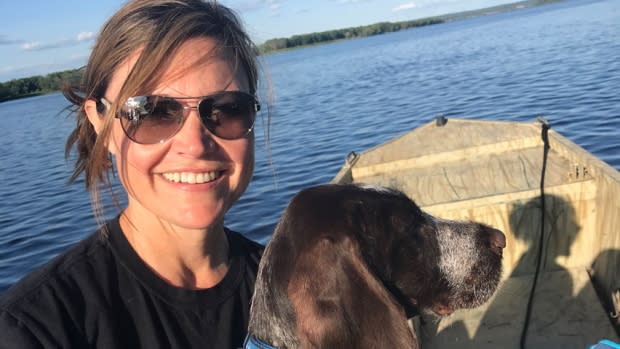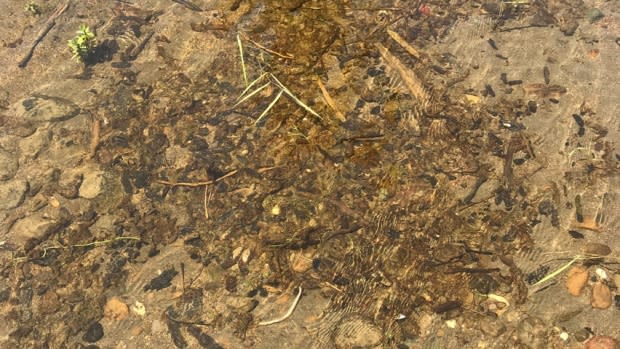'Our little Flint didn't stand a chance': Fredericton woman warns dog owners about algae
It started as a beautiful Saturday afternoon on the water.
Sandy Kitchen-Brewer, her husband and their 16-week-old hunting dog, Flint, were swimming in the St John River and lying on the beach on one of the islands across from the Woodstock Road Tim Hortons. The sun had just come out, warming the water and reflecting off the waves.
Suddenly, Flint began to behave strangely. He started vomiting and wobbling and giving Kitchen-Brewer a confused look. She immediately called the vet and got in the van to drive to the Douglas Animal Hospital. On the way, Flint began convulsing.
"This was all in a matter of minutes," she said. "It all just happened so fast and he's convulsing and I couldn't feel his heartbeat."
Kitchen-Brewer said she tried to give the dog CPR and mouth-to-mouth.
"He was gone. He died en route to the vet."
Flint's death has not been conclusively linked to blue-green algae, also known as cyanobacteria, but provincial health officials are asking people to watch out for the blooms and to err on the side of caution by staying away from the water if they see or smell any sign of the algae.
Some cyanobacteria produce toxins that can be be deadly to pets within 30 minutes and pose health risks to people, including skin, eye and throat irritation, or gastrointestinal illness.
I don't want anybody else to have to go through what we went through. - Sandy Kitchen-Brewer, dog owner
Kitchen-Brewer said she wants her story to be a cautionary tale so Flint's death won't have been in vain.
"I don't want anybody else to have to go through what we went through that day," she said.
On Tuesday, Kitchen-Brewer took staff from the provincial Department of Environment to the area where they were swimming. She said blue-green algae was everywhere.
"Our little Flint didn't stand a chance," she said. "Nor would any other dog."

Dr. Jim Goltz, manager of the province's veterinary laboratory service, said the samples from Flint were received Monday. The stomach contents and other samples have been sent to a lab in Davis, Calif., where they will be tested for any sign of the toxic algae.
"I suspect within a week or two we should have the results if all goes well," he said.
"We don't know for sure that the dog came in contact with the toxin because the investigation was not complete."
Kitchen-Brewer made a social media post with all the pictures she took while with staff so that "people would know what to look for, keep their children away from it, keep their animals away from it."

Goltz previously said dog owners should give their pets water to drink before heading to any bodies of water so they won't be thirsty. Owners should also limit the length of time their dogs are in the water and keep a close eye on them to ensure they don't drink any water or eat any mats of vegetation, he said.
Algae mats, which look like clumps of vegetation, can be in the water and along the shore. In the water, they can appear black, brown or dark green. They can be attached to rocks or aquatic vegetation or may be floating in the water. On the shoreline, they may appear brown or grey once they have dried.
Dogs are attracted to the odour.


